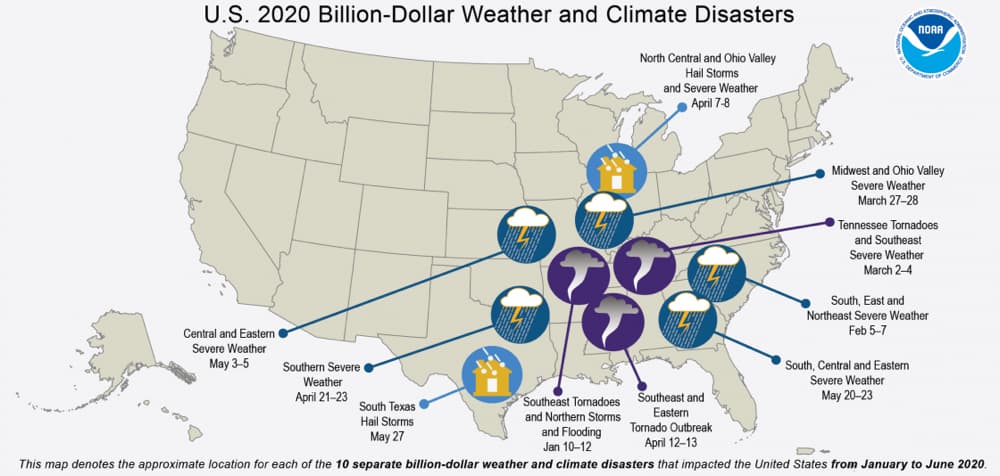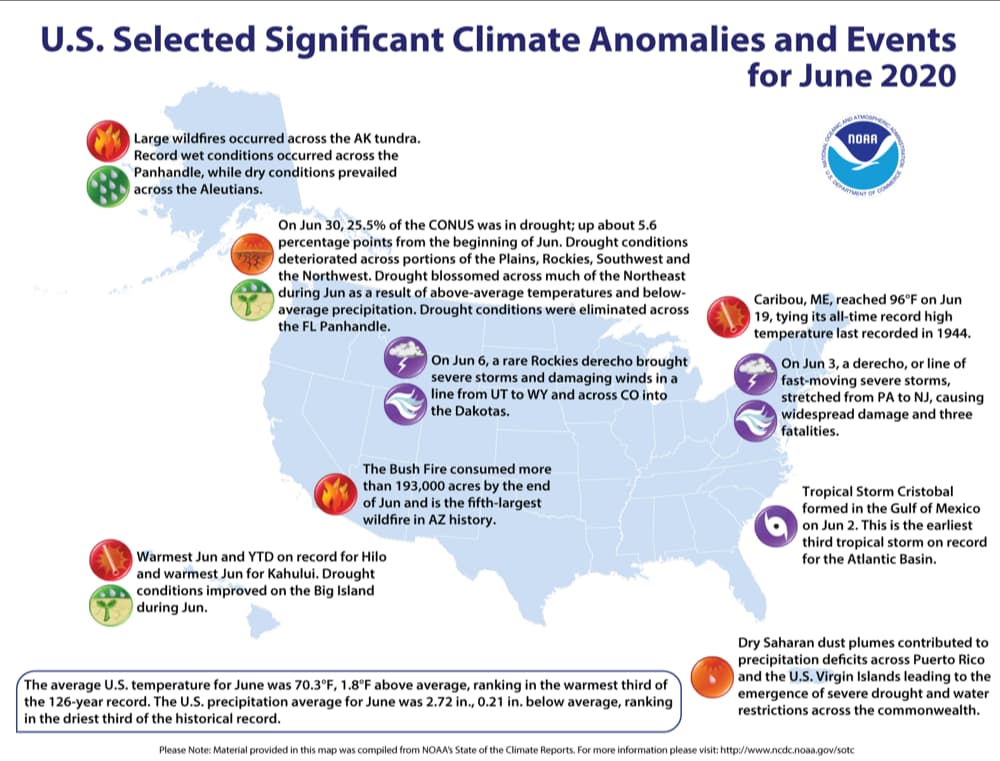Nation also saw 10 billion-dollar disasters in first six months of this year

Hot temperatures and below-normal rainfall put June 2020 among the warmest and driest Junes in the 126-year U.S. climate record.
In addition, the first half of 2020 brought 10 billion-dollar weather disasters. This makes 2020 the sixth consecutive calendar year where 10 or more billion-dollar weather events occurred — a new record, according to experts from NOAA’s National Centers for Environmental Information.
Here’s a climate snapshot of the month of June and the year to date:
Climate by the numbers
June 2020
The average June temperature across the contiguous U.S. was 70.3 degrees F (1.8 degrees above average), ranking it in the warmest third in the 126-year record. Above-average temperatures were observed across portions of the West and Gulf coasts, the Southwest, Northern Plains, and from the Great Lakes to New England.
The average precipitation for June was 2.72 inches (0.21 of an inch below average), which ranked in the driest third of the record. Despite the dry conditions, some locations did see above-average precipitation, including parts of the Pacific Northwest, Rockies, and Great Lakes. Idaho had its 13th-wettest June on record.
Year to date (YTD) | January through June 2020
The year-to-date average temperature for the contiguous U.S. was 50.0°F, which is 2.4°F above the 20th-century average and the eighth warmest YTD on record. Meanwhile, Florida sweltered through its hottest YTD on record.
Despite June’s arid conditions, the YTD precipitation total was 16.32 inches, 1.01 inches above average. It ranked in the wettest third of the 126-year record.
Tennessee had its wettest YTD on record; North Carolina had its fourth wettest.
Billion-dollar disasters, so far
Through the end of June 2020, the U.S. experienced 10 weather and climate disasters that caused 80 deaths and incurred losses exceeding $1 billion each. All 10 events were due to severe storms that occurred across more than 30 states, from the Great Lakes to the Gulf Coast.
This year is the sixth consecutive year with at least 10 separate billion-dollar disasters to date. 2020 also tied with 2011 and 2016 for having 10 disasters within the first six months of the year, just trailing the record set in 2017 (11 events by end of June).

More notable climate events
-
Alaska had a warm, wet June: The state’s average June temperature was 50.5 degrees F — 1.3 degrees above the long-term mean — which ranked in the warmest third of the historical record. Alaska received ample precipitation during June, making it the seventh wettest on record. Both Juneau and Ketchikan had their record-wettest June.
-
Drought continued to spread: According to the U.S. Drought Monitor report, more than a quarter of the contiguous U.S. was in drought by the end of June, up from nearly 20% at the beginning of the month. Drought conditions developed across much of the Northeast and expanded or intensified across portions of the Plains, Rockies, Southwest, Northwest, and Puerto Rico.